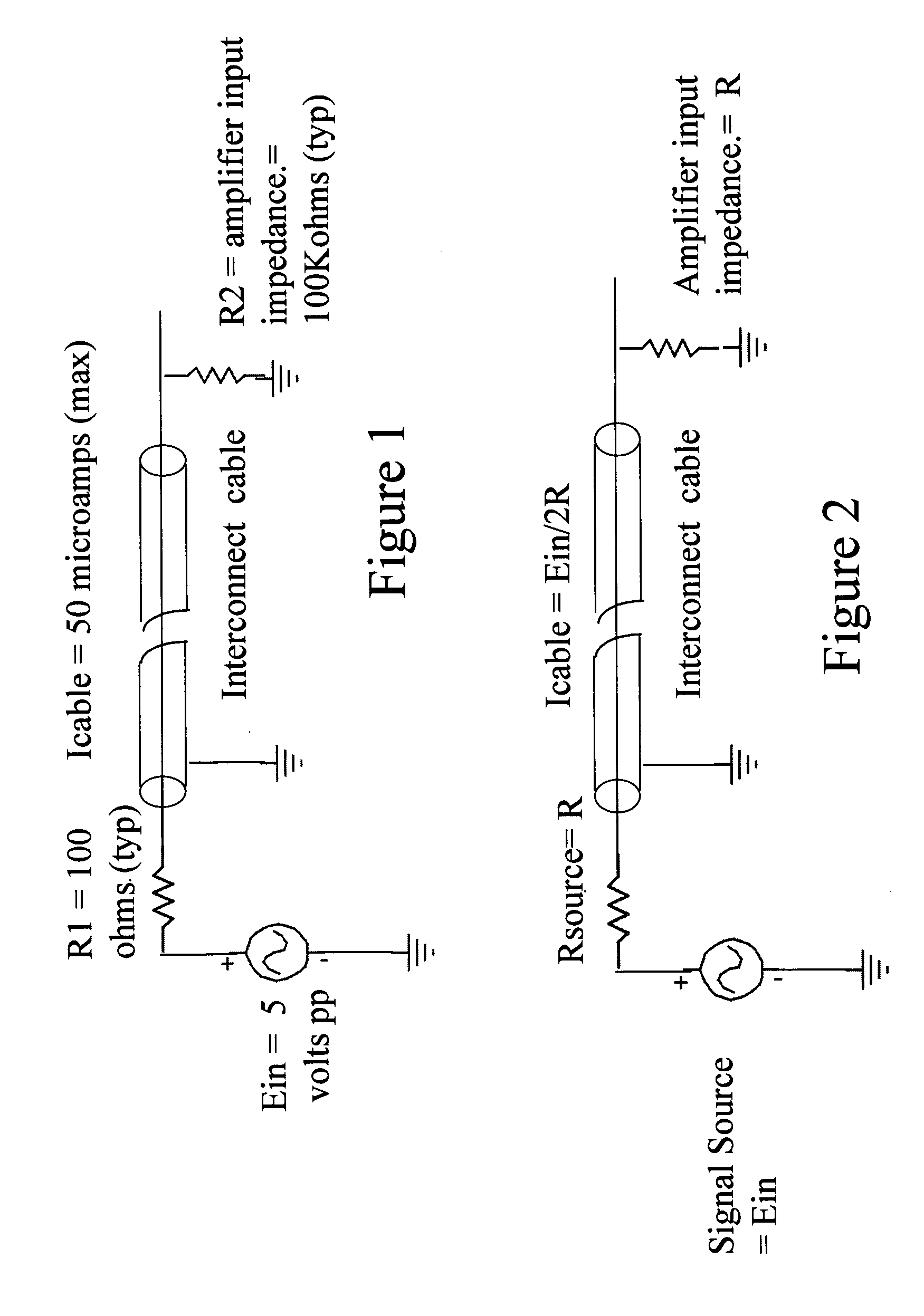Transmission drive line for low level audio analog electrical signals
- Summary
- Abstract
- Description
- Claims
- Application Information
AI Technical Summary
Benefits of technology
Problems solved by technology
Method used
Image
Examples
Embodiment Construction
[0020] The basic idea underlying the subject invention stems from the recognition that the typical maximum signal amplitude from an audio source, say a tuner or CD player is of the order of five volts or less with such signal sources having an output impedance typically in the range of hundreds of ohms. Moreover, the input impedance of the receiving unit such as a pre-amplifier or amplifier is of the order of 100,000 ohms or greater. As FIG. 1 illustrates, under these conditions the signal current through the interconnecting cable is limited to the order of 50 microamperes or less. This is to be contrasted with the current, which flows from the output of a typical amplifier to a loud speaker with a power capability of 100 watts or more. In this latter situation the signal current flowing through the connecting cable can be as much as five amperes or more.
[0021] After much experimentation, the inventor has found that a dramatically improved, “concert-hall realism” in audio listening...
PUM
 Login to View More
Login to View More Abstract
Description
Claims
Application Information
 Login to View More
Login to View More - R&D
- Intellectual Property
- Life Sciences
- Materials
- Tech Scout
- Unparalleled Data Quality
- Higher Quality Content
- 60% Fewer Hallucinations
Browse by: Latest US Patents, China's latest patents, Technical Efficacy Thesaurus, Application Domain, Technology Topic, Popular Technical Reports.
© 2025 PatSnap. All rights reserved.Legal|Privacy policy|Modern Slavery Act Transparency Statement|Sitemap|About US| Contact US: help@patsnap.com



